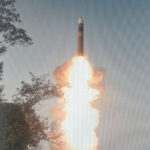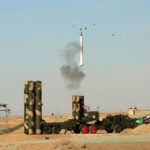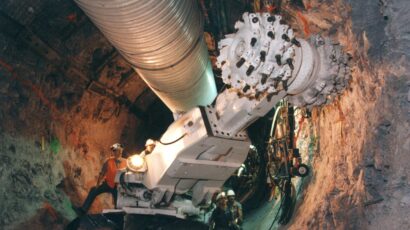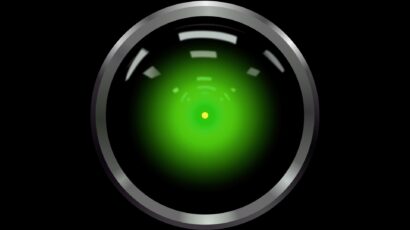Radiation exposure and the power of zero
By Jeffrey Patterson | April 26, 2011
The ongoing nuclear power plant disaster in Japan has once again pushed the topic of radiation safety into the public consciousness, while also reminding us that the public continues to doubt government and nuclear industry information on safety and the effects of radiation. Part of this wariness stems from the fact that people cannot detect radiation using their own senses, which creates a dread of the unknown. People are also very aware that the effects of radiation are cumulative and may not appear for many years, so the outcome of a disaster like Fukushima is not easy to predict. Finally, the nuclear industry has a history of secrecy, cover-up, and soft-pedaling that does not engender public trust.
There are some basic principles to consider when the impacts of radiation exposure are evaluated. First, there is no “safe” or non–harmful level of radiation. Second, we are all exposed to radiation: background radiation emitted by natural sources, with which we evolved; and medical radiation, which may be necessary and life-saving as decided and controlled by the patient and physician.
Finally, there is another form of exposure that has been thrust upon the world since the advent of the nuclear age: radiation released by the mining and processing of nuclear fuel, the testing and use of nuclear weapons, and the “controlled” and catastrophic releases of long-lived radionuclides by the nuclear power industry. This is quite a different issue, because the effects of these releases will continue for many years but will likely remain hidden or unknown. Worldwide, an unknowing and unsuspecting public is being randomly exposed to radiation without any opportunity for informed consent. People can choose whether or not to have x-rays, to reduce the radon exposure in their homes, or to fly. However, the public has no choice, and certainly inadequate knowledge, about radiation exposure from nuclear power and nuclear weapons.
History lessons. The history of radiation exposure is instructive when we consider this topic. In 1895, Wilhelm Röntgen discovered x-rays and used them to take a picture of the bones inside his wife’s hand. A year later, Henri Becquerel realized that invisible emanations from uranium salts would expose photographic plates. Marie Curie and her husband Pierre carried this work further, leading to the use of mobile x-ray machines in World War I. Madame Curie, it is said, enjoyed the glow from radioactive test tubes that she kept in her desk. She died at age 66 from aplastic anemia thought to be caused by her work with radiation. Were she alive today, she would undoubtedly follow the precautions that modern scientists take when dealing with radiation, and would not be carrying around radioactive material unprotected. Likewise, radiologists began taking steps to protect themselves from the damaging effects of radiation after noticing that people in this profession were dying at earlier ages than their colleagues who were not exposed to radiation.
Yet even in the 1970s it was common medical practice to x-ray pregnant women during labor to see if the pelvis was “adequate” — a procedure, incidentally, that was absolutely worthless. Sentinel work by Alice Stewart, a physician and epidemiologist who studied the effects of radiation on health, revealed that even one x-ray before birth could increase a child’s chances of getting leukemia. Despite criticism of Stewart’s work by the nuclear industry, doctors no longer perform x-rays on pregnant women unless absolutely necessary. The trend throughout the nuclear age has been a growing recognition that there is no “safe” or “harmless” dose of radiation.
In 2006 the National Academies’ National Research Council published a comprehensive report, “Health Risks from Exposure to Low Levels of Ionizing Radiation (BEIR VII – Phase 2)” stating that radiation exposure has a linear relationship to the development of cancer. The report concluded that even low doses of ionizing radiation are likely to pose some health risks; there is no threshold of exposure below which the risk drops to zero.
Unknown impacts. Most of what we know about the effects of radiation exposure comes from studies of the survivors of the Hiroshima and Nagasaki bombings, from intentional medical irradiation, and from a few high-dose accidents. The Hiroshima exposure was a one-time dose largely composed of gamma rays and x-rays, because the bombs were exploded high in the air and produced very little fallout. This type of radiation exposure is very different from the releases caused by nuclear testing, the 1957 Kyshtym accident at a nuclear fuel processing plant in Russia, and the disasters at Chernobyl and Fukushima. These have produced long-lived radionuclides — such as cesium 137, strontium 90, and plutonium 239 — that remain in the environment for hundreds of years. To say that these radionuclides cause no harm to human health is unwarranted; we must observe populations for generations to know what the effects of these releases are. Unfortunately, minimizing or covering up the potential risks has long been a strategy of the nuclear industry and its government regulators.
A classic example of this occurred in 1951, when the general manager of the Eastman Kodak Company called the Atomic Energy Commission (AEC) to complain about high levels of radiation detected at the Kodak plant in Rochester, New York, during a snowstorm. Kodak executives were concerned that radiation could damage their film. The AEC confirmed that a nuclear test had taken place two days earlier in Nevada, and offered to send Kodak warnings before future tests, including maps predicting where the heaviest fallout would occur. Meanwhile, the AEC failed to give any warning to farmers, families with children who would drink contaminated milk, or pregnant mothers — and instead released a statement to the Associated Press that “there is no possibility of harm to humans or animals.” Other gross examples include the cover-up of the Kyshtym disaster by the US and the Soviet Union, and the failure to inform the general public of the Chernobyl crisis during the first three days that it was happening.
The real issue. Scientific arguments regarding the effects of particular doses of radiation will and should continue. However, to make this the focus of any discussion of nuclear safety obscures the real issue, thus missing the forest for the trees. The real issue is that the use of nuclear power and nuclear weapons is forcing humankind, and indeed the whole ecosystem, to participate in a particularly cruel and totally uncontrolled experiment. Given the scientific evidence that there is no safe dose of radiation, this is an experiment that has already gone awry. Indeed, if this were a true scientific experiment, it would have been halted a long time ago.
The real question is whether we, as a human race, can afford in good conscience to risk annihilation with our continued reliance on nuclear technology. Can we continue to despoil our environment with long-lived radioactive materials that are scattered to the wind and embedded in our precious soil, randomly exposing large populations, and foisting health impacts on unsuspecting future generations who have no choice in this matter?
We may choose to do so. But if we do, I am quite sure that our children and grandchildren will roundly condemn us for our lack of foresight and our selfishness. As they struggle to deal with a poisonous environment and waste that must be safeguarded for thousands of years, they will certainly wonder what possessed us to do this.
We must choose to halt this process. To do this we need to quickly abolish all nuclear weapons, and make a dramatic and rapid retreat from the use of nuclear power to generate electricity. Only then will we demonstrate that we recognize and appreciate the true meaning of Einstein’s prophetic words: “The splitting of the atom has changed everything save our mode of thinking. Thus we drift toward unparalleled catastrophe.”
Together, we make the world safer.
The Bulletin elevates expert voices above the noise. But as an independent nonprofit organization, our operations depend on the support of readers like you. Help us continue to deliver quality journalism that holds leaders accountable. Your support of our work at any level is important. In return, we promise our coverage will be understandable, influential, vigilant, solution-oriented, and fair-minded. Together we can make a difference.
Topics: Nuclear Weapons, Opinion














